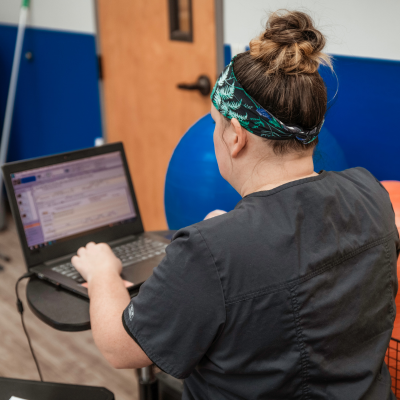Pet Ultrasound
At Northridge Veterinary Clinic and Rehabilitation in Wichita, KS, we prioritize the use of advanced diagnostic tools in ensuring the health and well-being of your beloved pets.

What is Pet Ultrasound?
Pet ultrasound, also known as ultrasonography, utilizes sound waves to create real-time images of your pet’s internal organs, tissues, and blood flow. Unlike traditional X-rays, ultrasound does not use radiation, making it safe for pets of all ages.
Our pet ultrasound service provides a non-invasive way to obtain detailed images of your pet’s internal organs, aiding in the diagnosis and treatment of various medical conditions.
Key Benefits of Pet Ultrasound
Accurate Diagnosis
Our advanced ultrasound technology allows for precise imaging, enabling our veterinarians to accurately diagnose a wide range of medical conditions, including abdominal issues, tumors, and heart disease.
Non-Invasive Procedure
Pet ultrasound is a non-invasive procedure that does not require anesthesia, making it safe and comfortable for your pet. There is minimal discomfort, and most pets tolerate the procedure well.
Guided Treatment Planning
The detailed images obtained through ultrasound help our veterinarians develop personalized treatment plans tailored to your pet’s specific needs. Whether it’s monitoring a pregnancy or evaluating organ function, ultrasound plays a crucial role in guiding treatment decisions.
Early Detection
Pet ultrasound allows for early detection of underlying health issues, leading to timely intervention and improved outcomes for your pet. Early diagnosis can significantly impact treatment success and overall prognosis.
When is Pet Ultrasound Necessary?
Pet ultrasound is recommended in various scenarios to aid in the diagnosis and treatment of medical conditions affecting our furry companions. One common instance where a pet ultrasound is necessary is when a pet experiences unexplained abdominal pain or discomfort.
In such cases, ultrasound imaging helps veterinarians identify the underlying cause, whether it’s gastrointestinal issues, organ abnormalities, or other concerns. Additionally, pet ultrasound is frequently utilized for monitoring pregnancy in dogs and cats, allowing veterinarians to track fetal development and ensure the health of both the mother and her offspring.
Furthermore, ultrasound plays a crucial role in assessing cardiac health by detecting abnormalities like heart murmurs, valve disease, and cardiomyopathy. It is also valuable for screening for tumors and guiding biopsies when necessary, enabling targeted sampling of suspicious areas for further evaluation. Overall, pet ultrasound serves as a non-invasive diagnostic tool that aids in early detection, treatment planning, and ultimately, improving the overall health outcomes for our pets.
